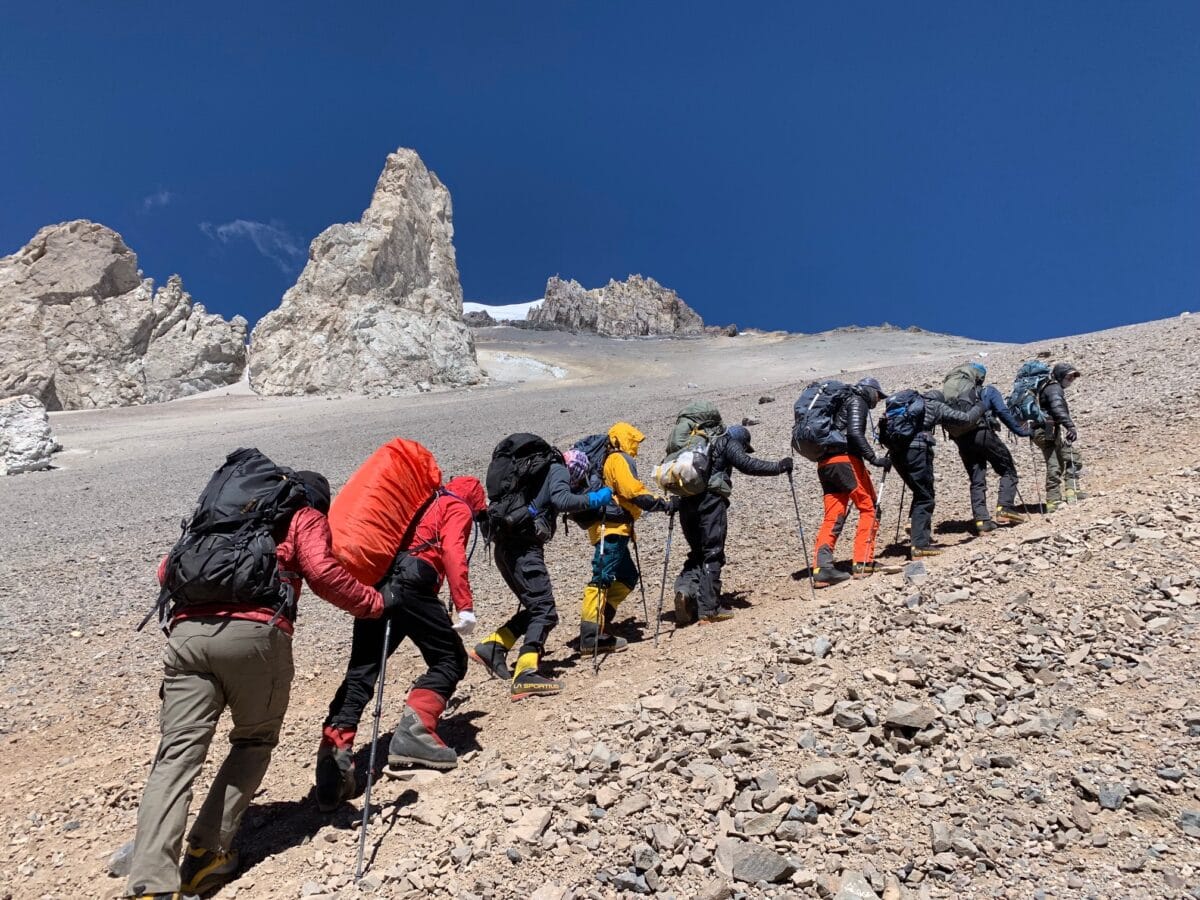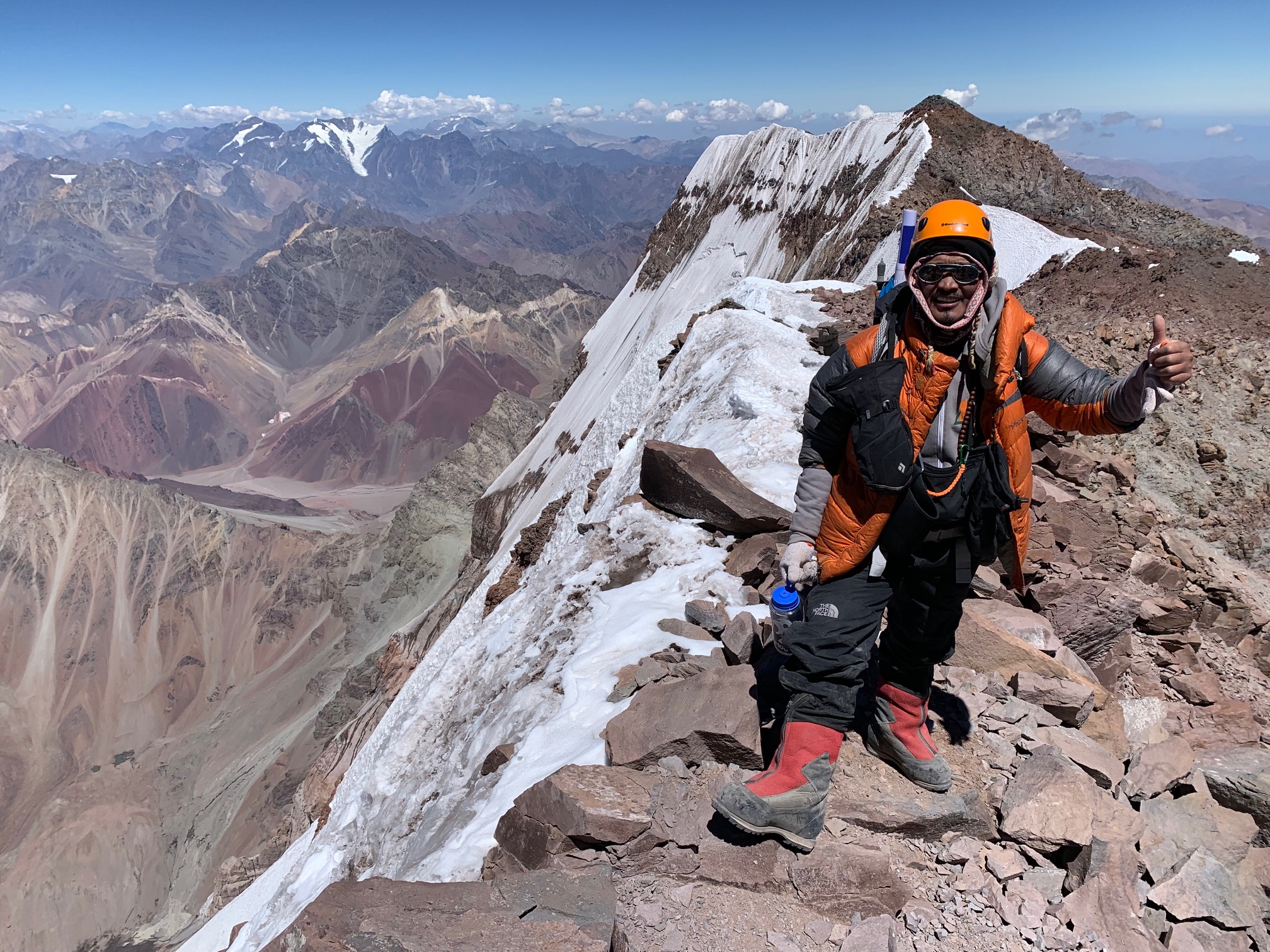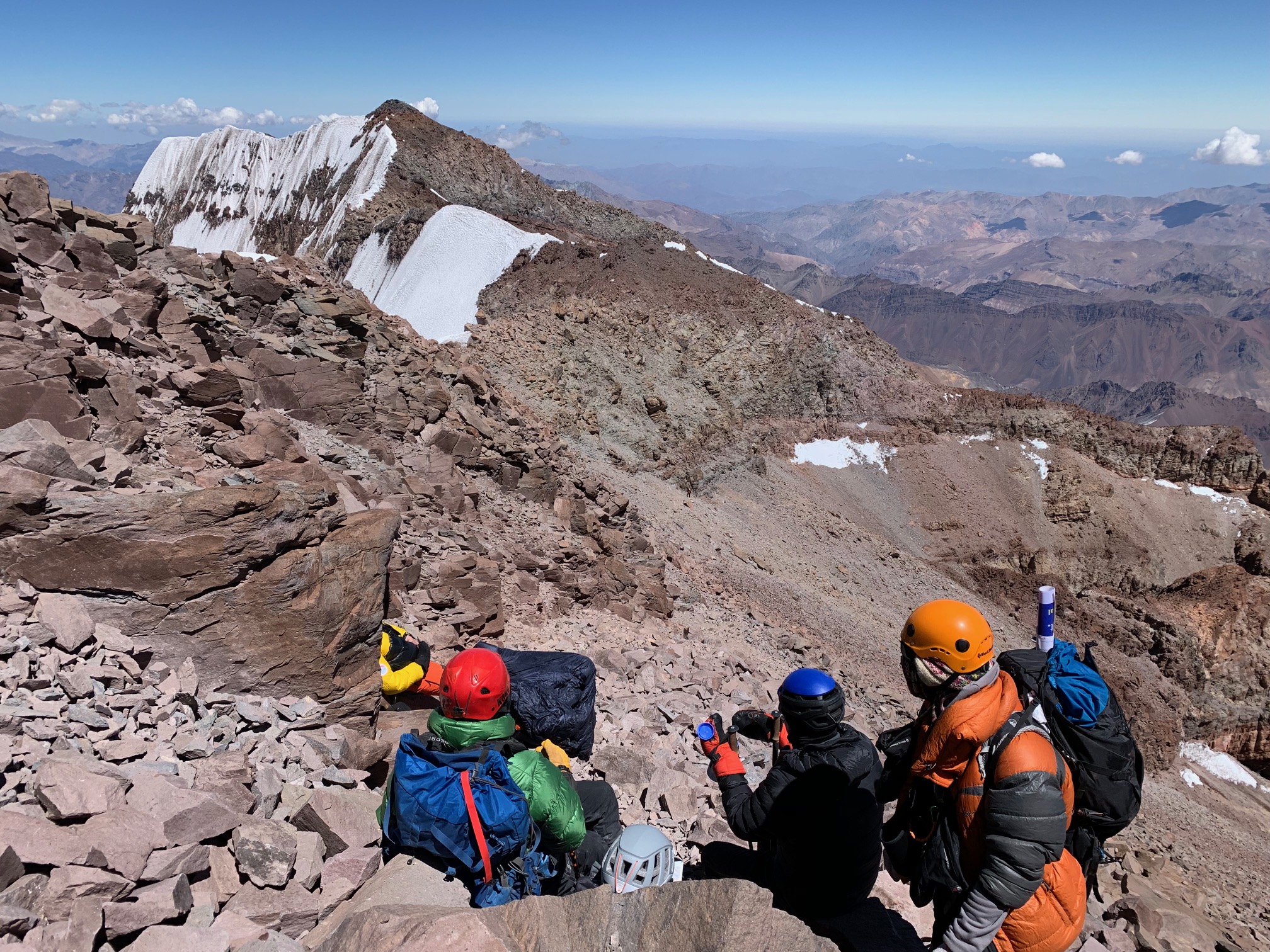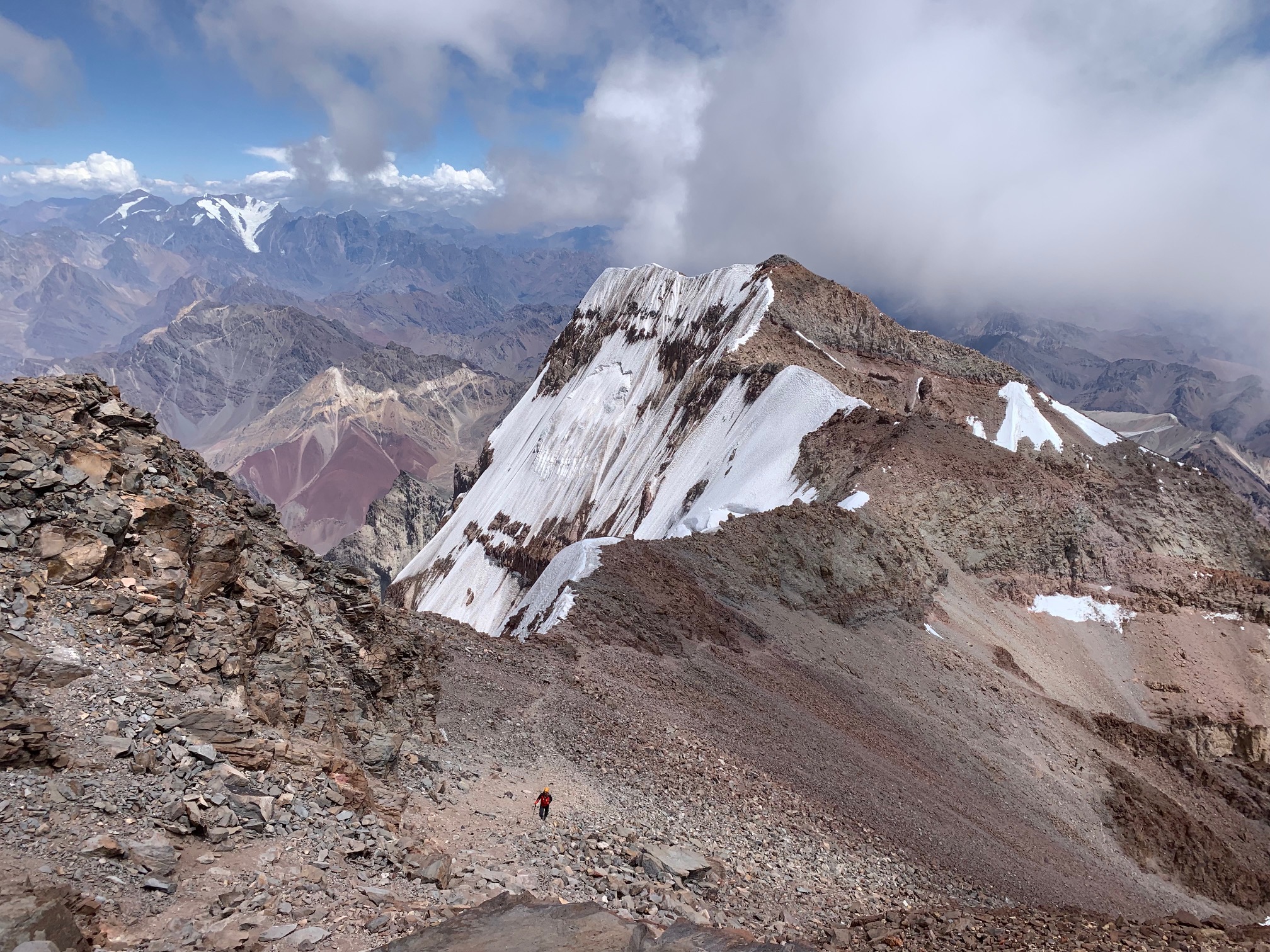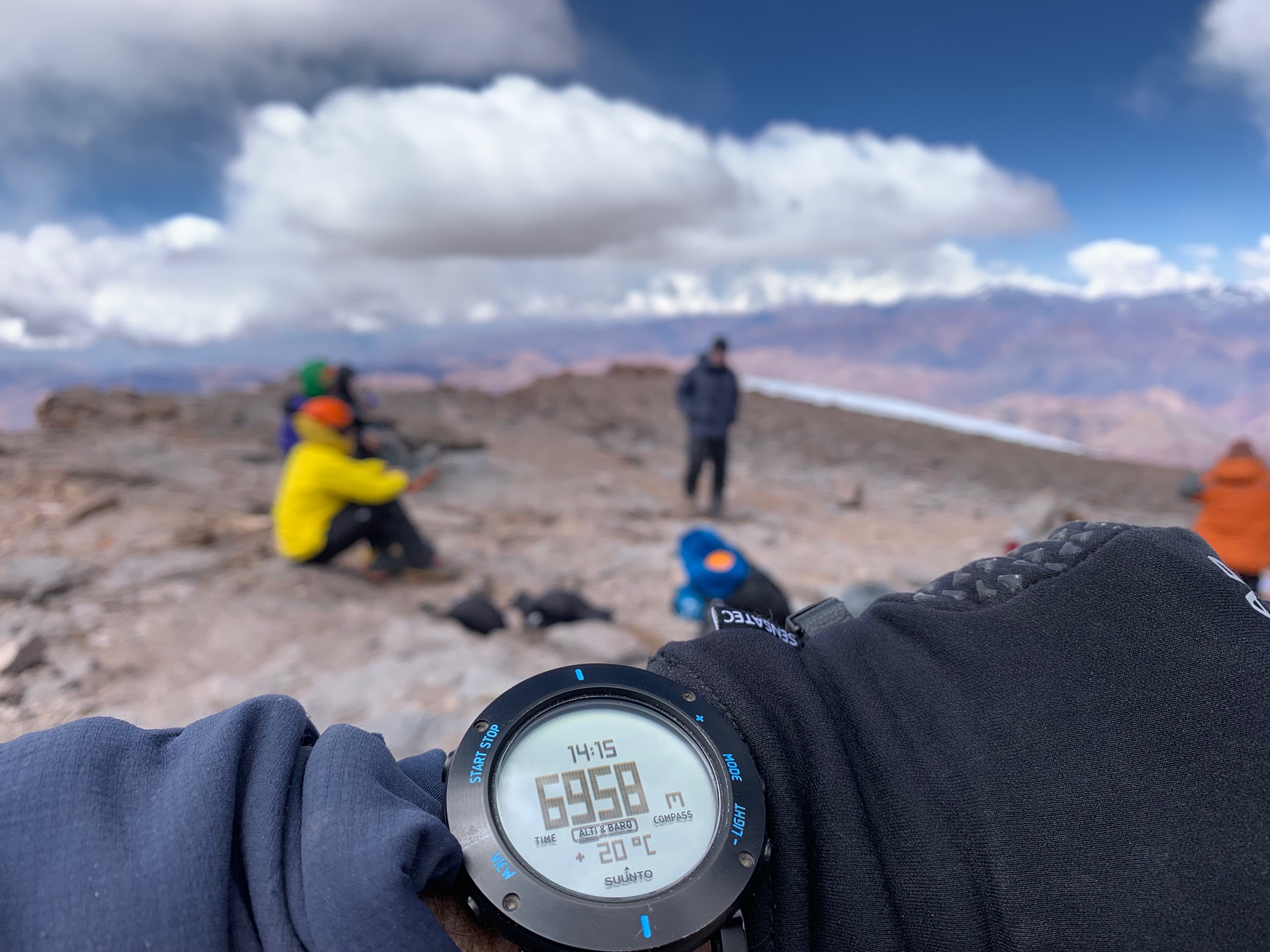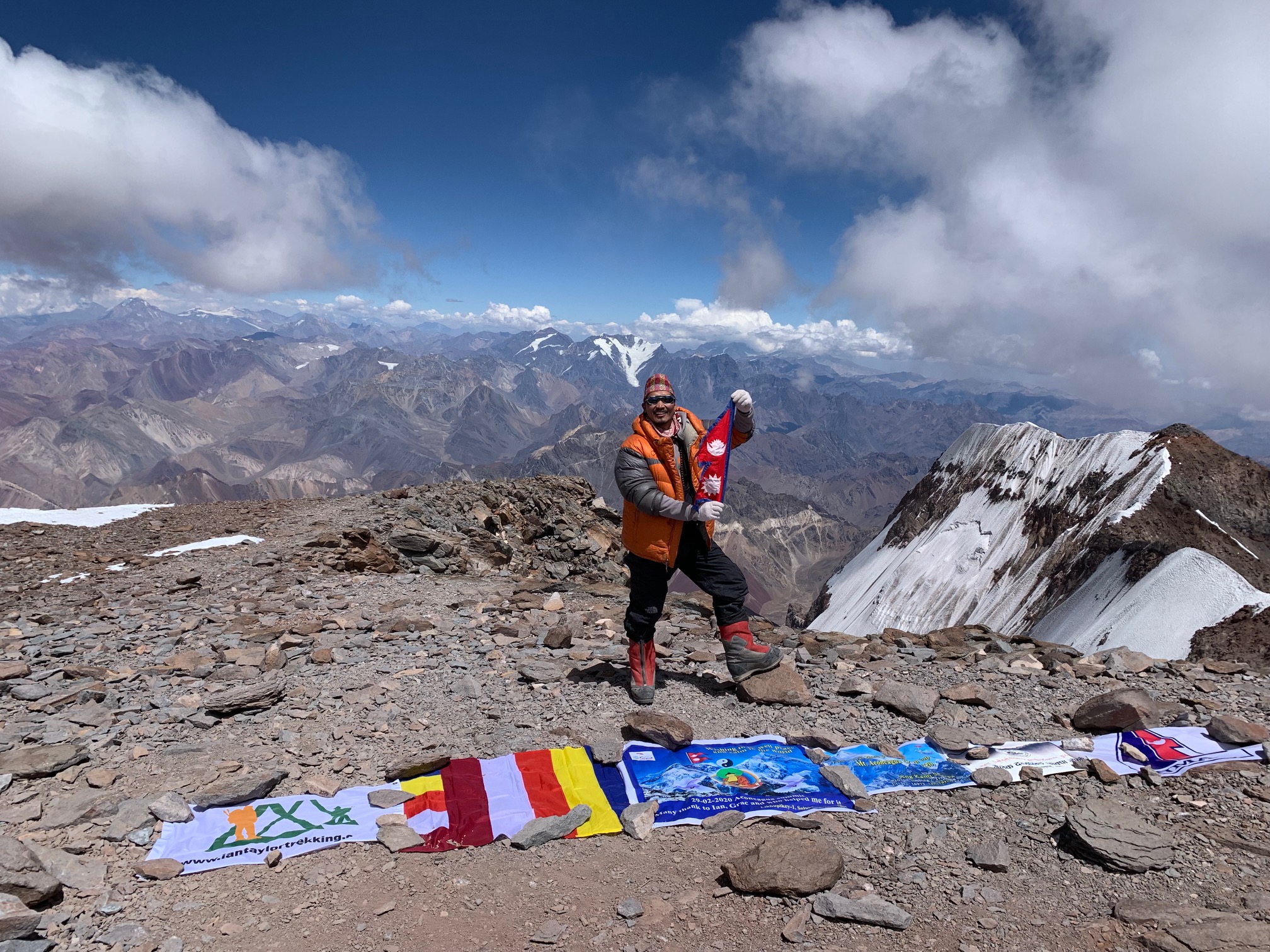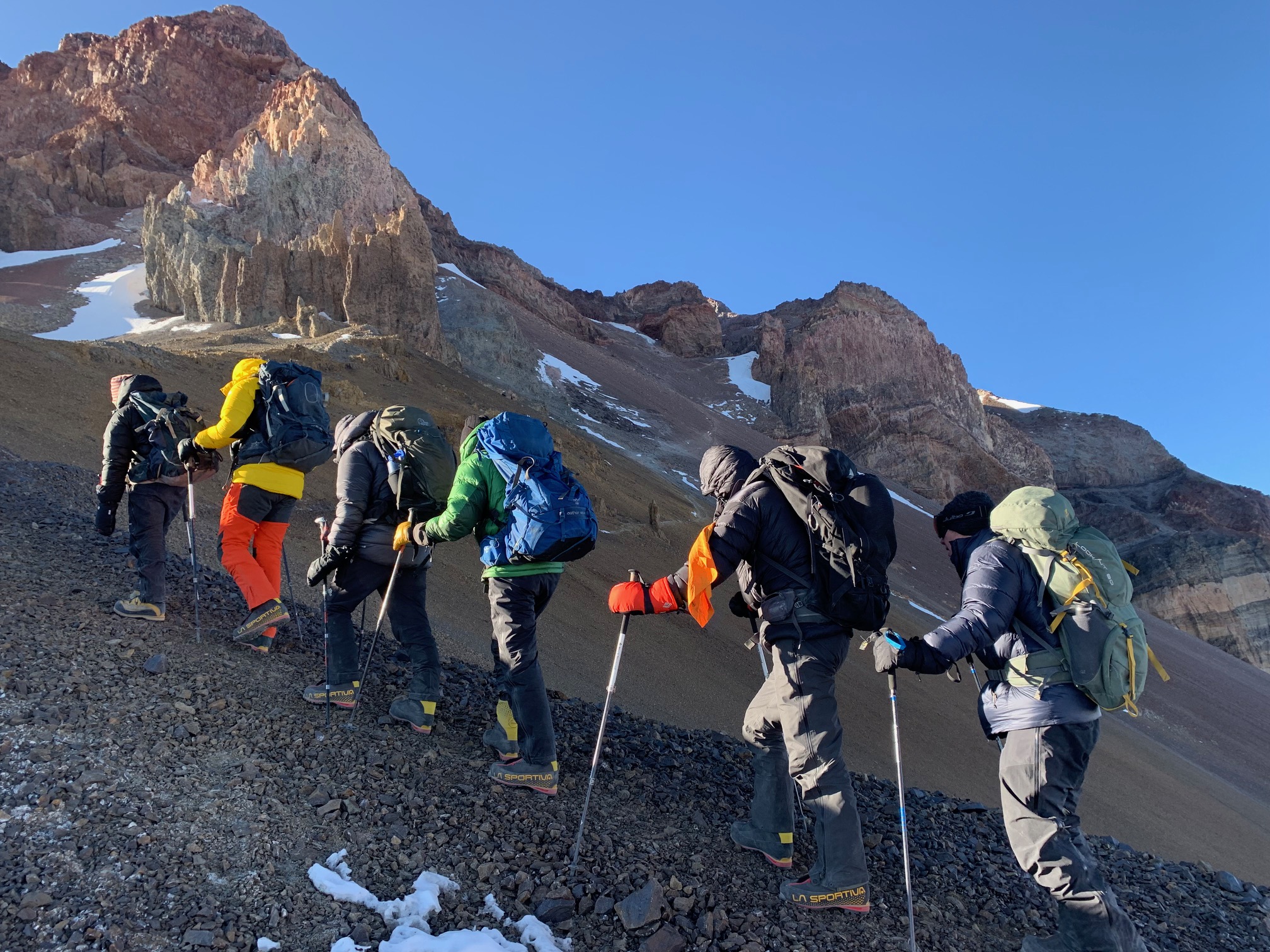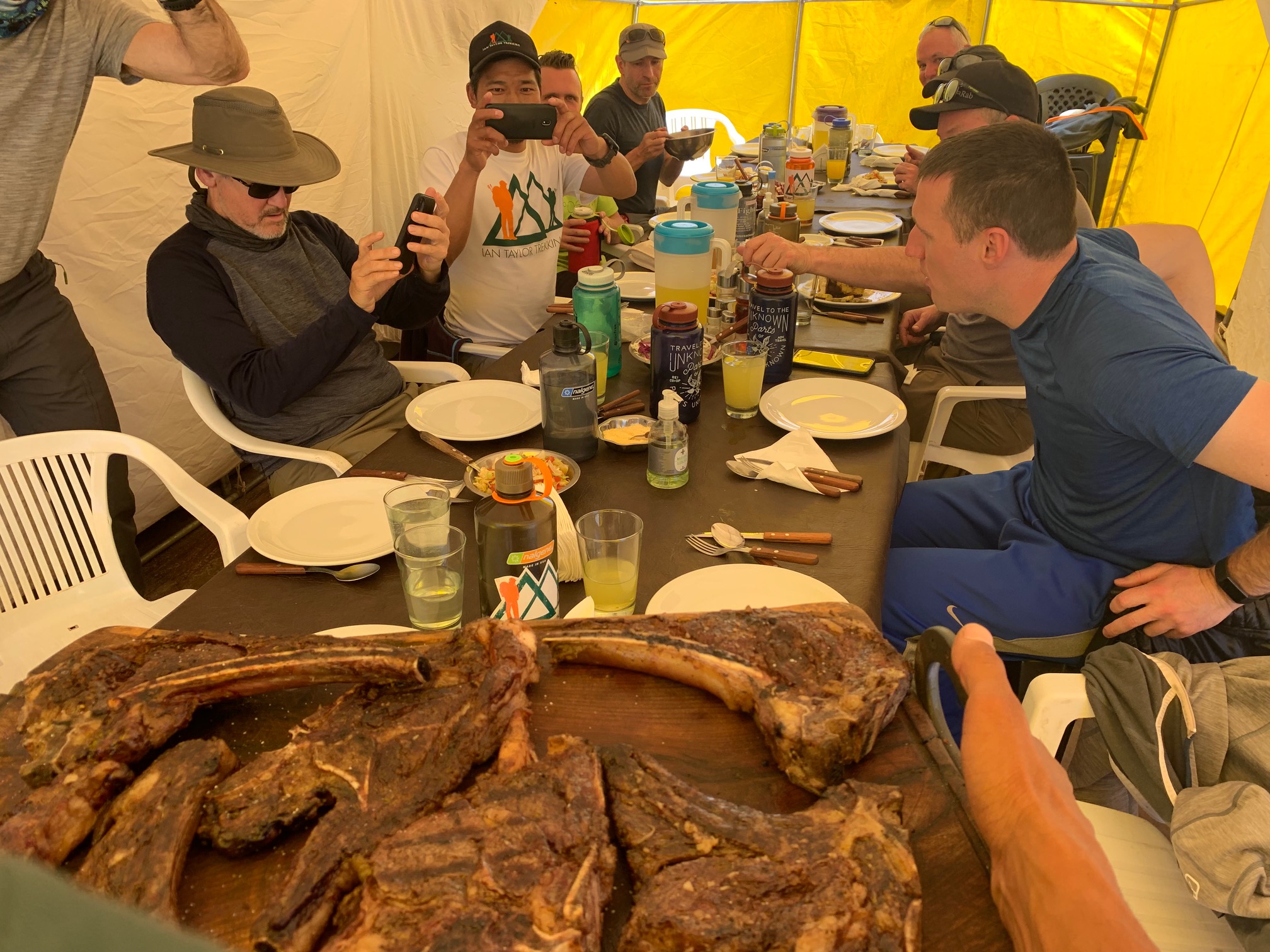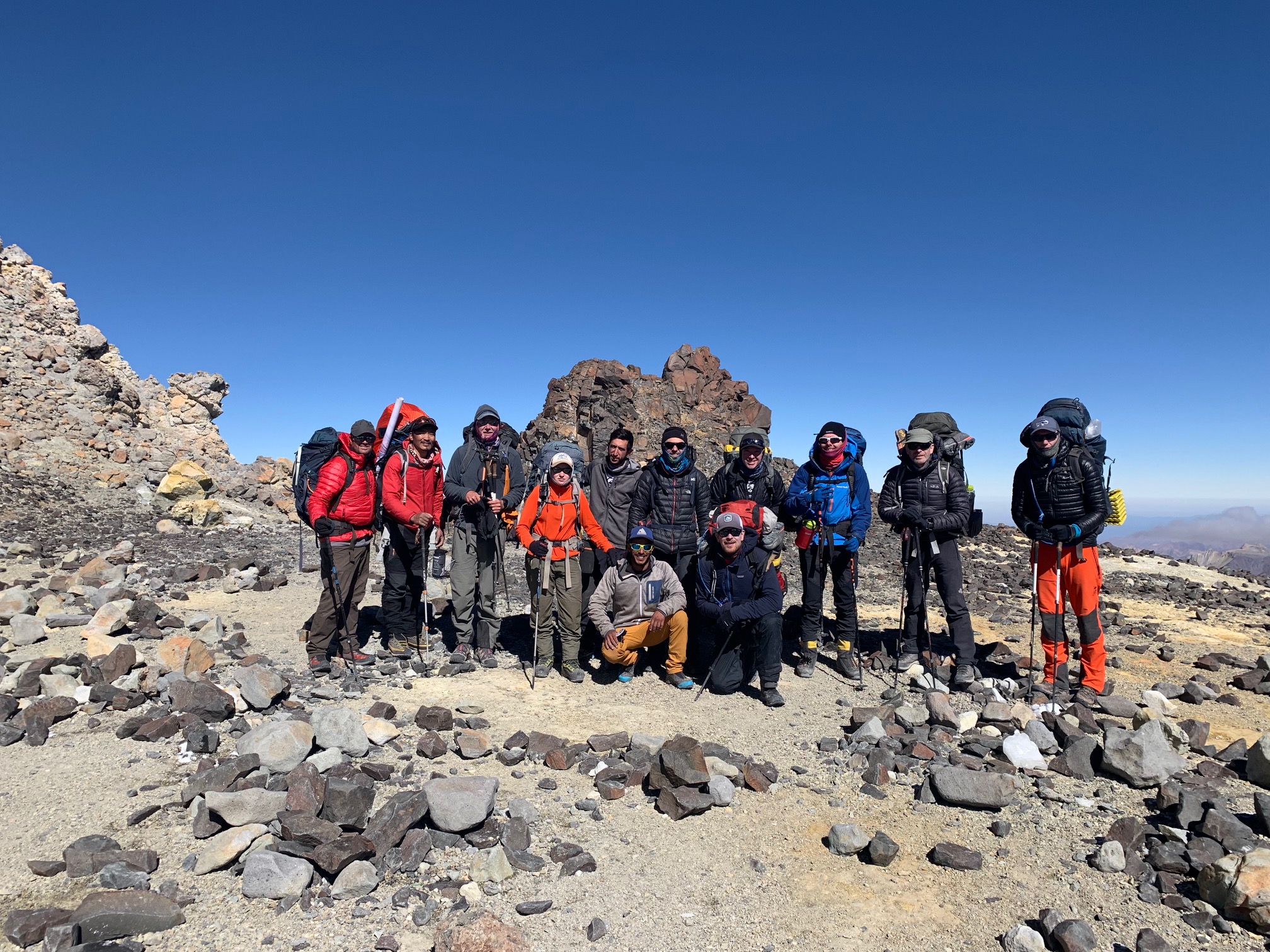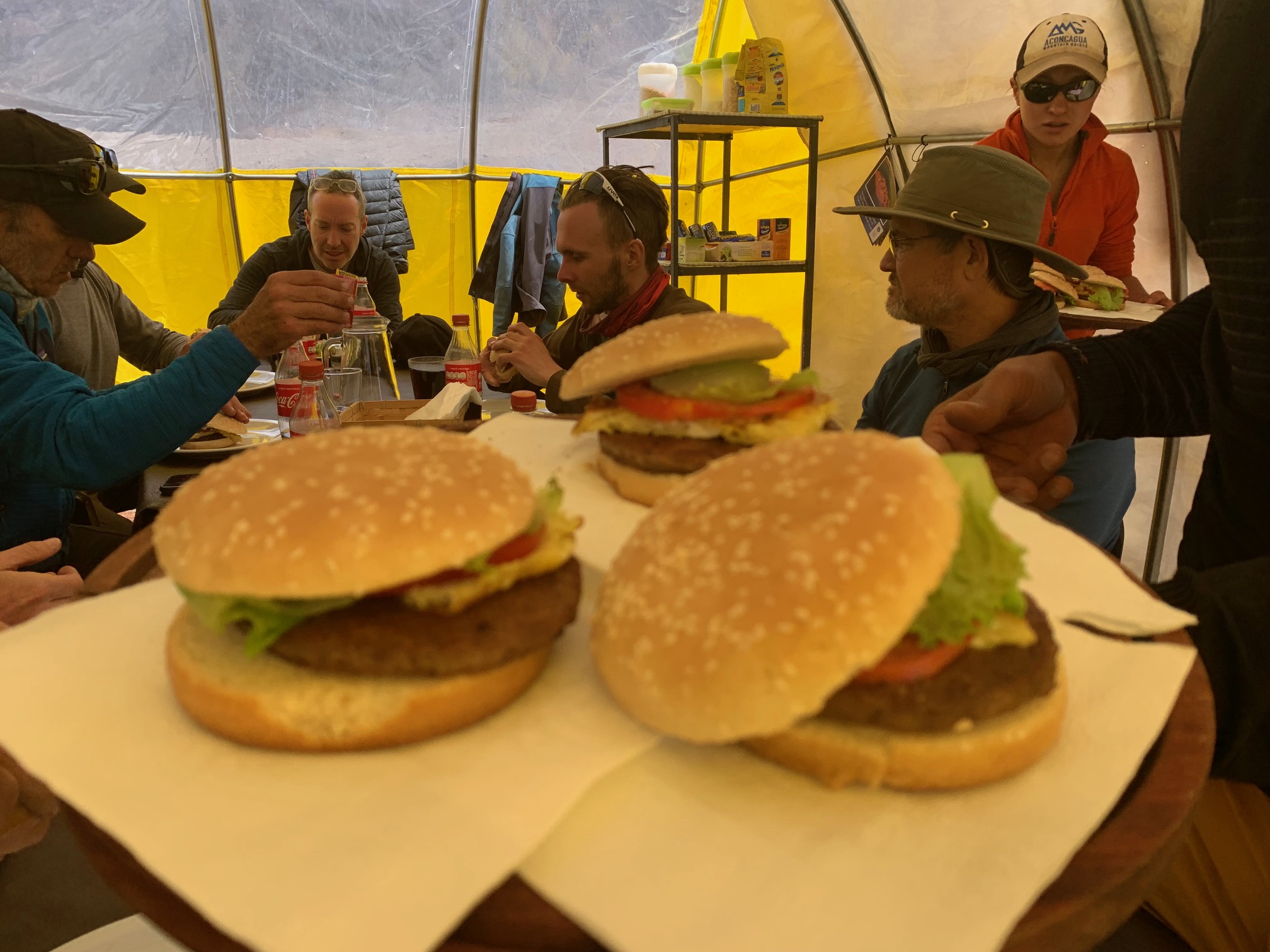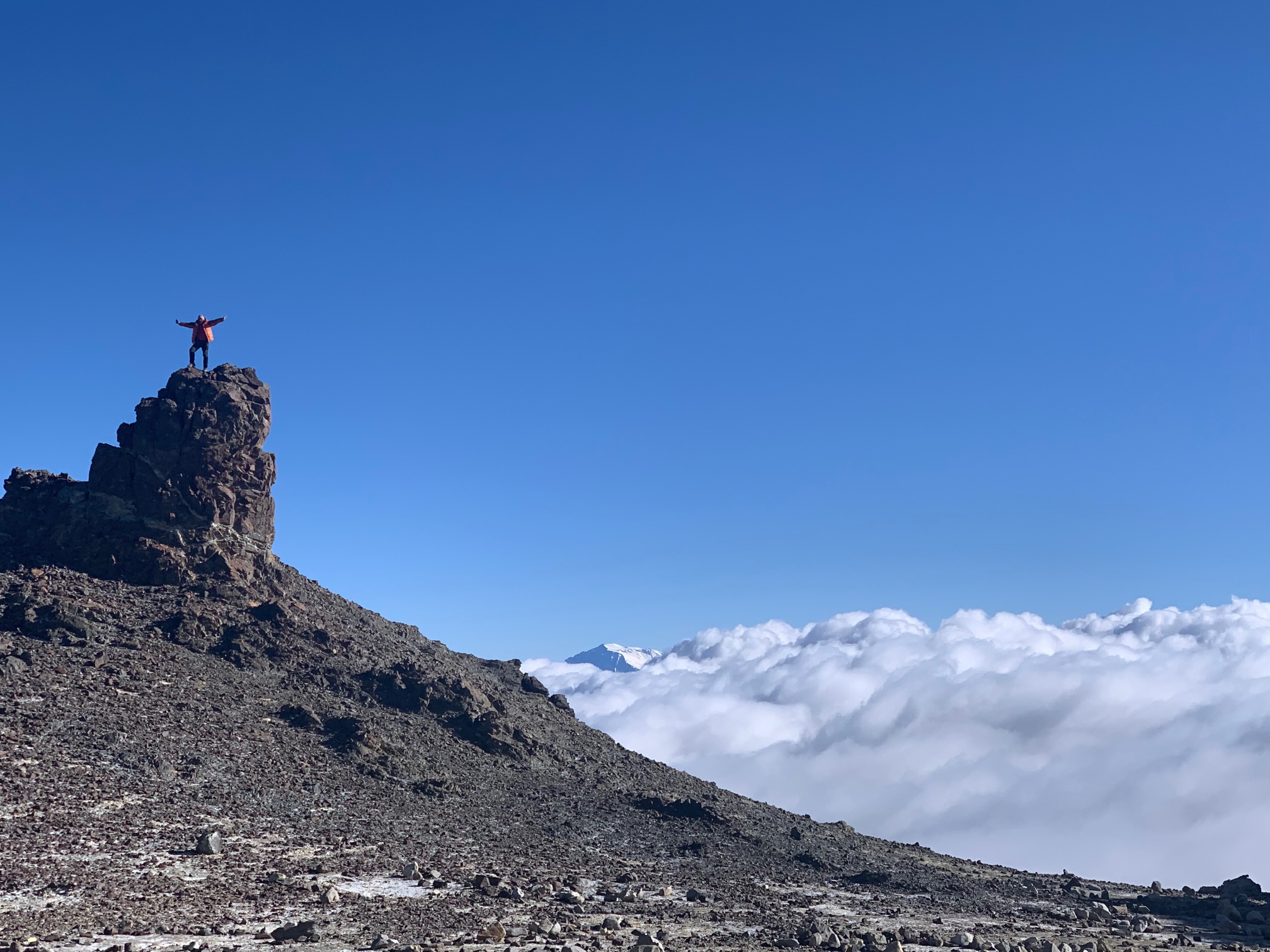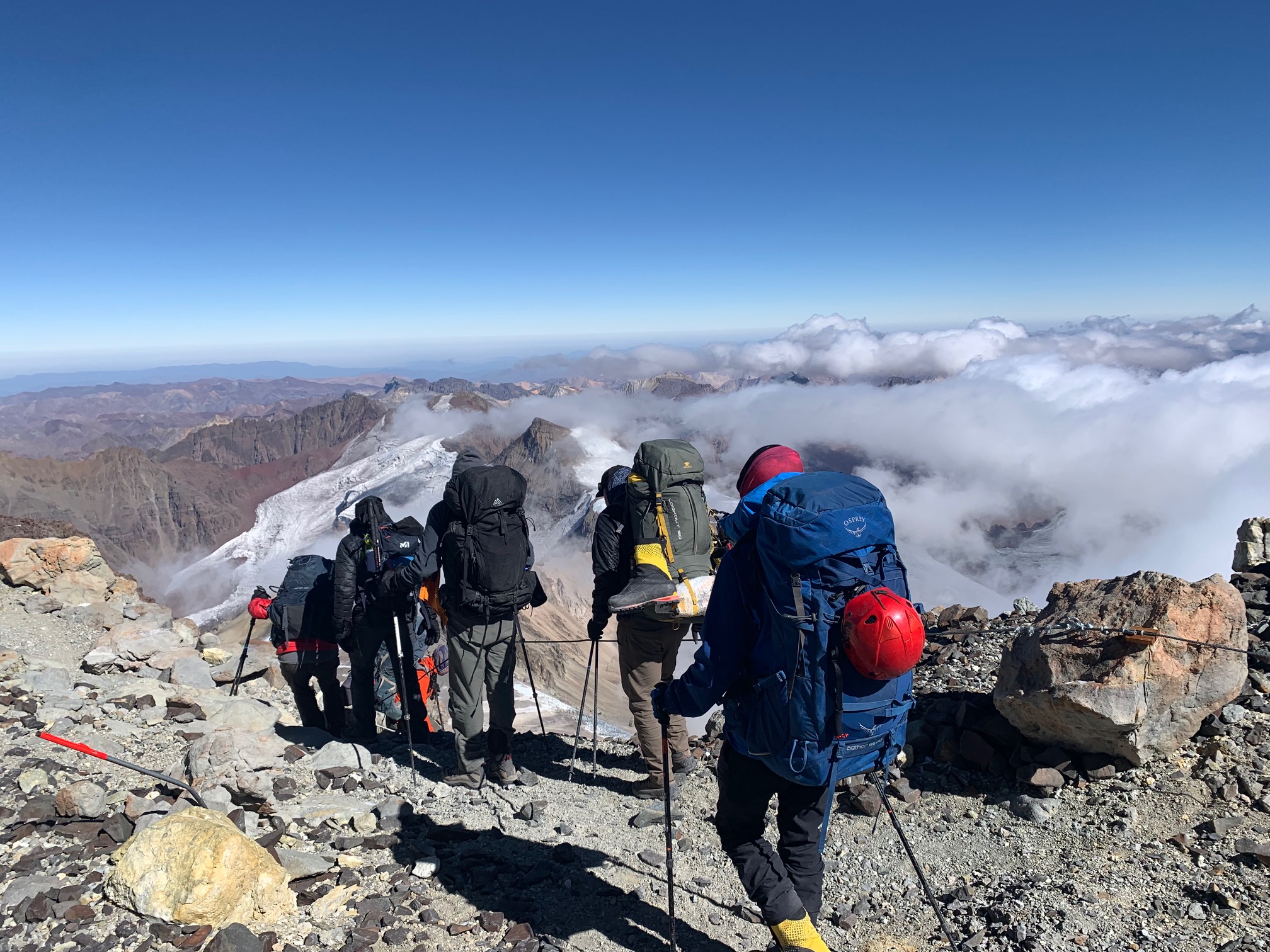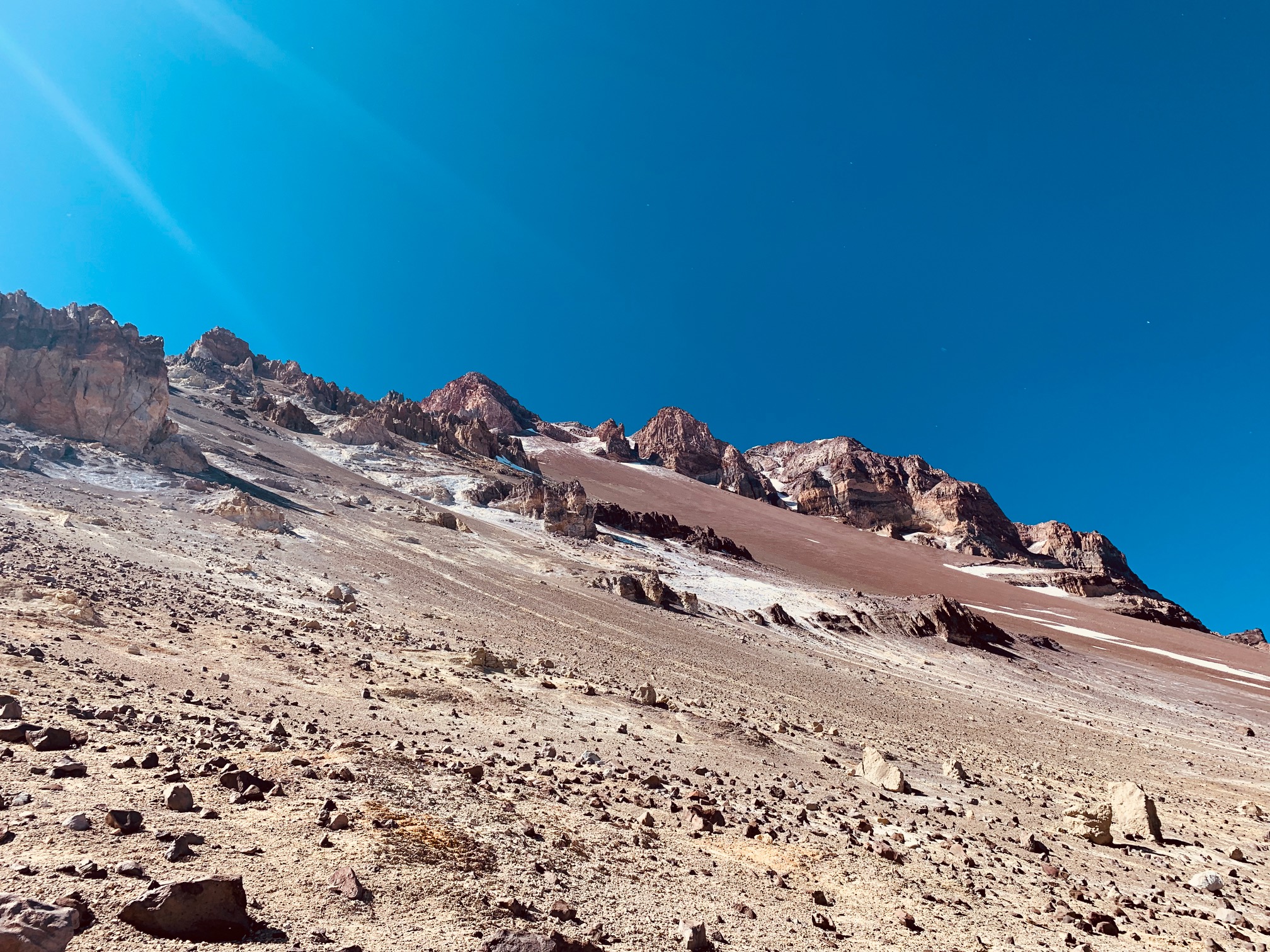What should you be packing for your Aconcagua expedition? Once you have signed up to one of our Aconcagua Expeditions, we will send you our 35 page trip Dossier with itemized kit list. The Dossier also includes training advice and other relevant information to help you come fully prepared for your Aconcagua climb. Here are 10 reasons to pick us for your trip. Below is our packing video, showing you what you should consider packing for your Aconcagua expedition.
What Should you Consider Packing for Aconcagua
This exhaustive list does not have to be followed word for word. We appreciate that climbers have their own preference regarding clothing, but we hope this list will ensure nothing is overlooked. Read some REVIEWS form our trips and get in touch to gain access to important information. Once you have signed up for our trip, we will send you a complete list, with examples of each item! Check out our TOP 20 TIPS for climbing Aconcagua.
Rucksacks Needed
Trekking Backpack: This can be a 35 liter day pack. This is for your trek to Aconcagua Base Camp. Once you move higher on the mountain and leave Base Camp, you will switch to your Expedition backpack. The daypack will go into your duffle and we be transported to Base Camp on the other side of the mountain.
Expedition Backpack: Suitable for large, bulky loads. This should be lightweight, strong and comfortable (try it on with some weight inside just to be sure) with internal frame but not too heavy. 80 liters minimum. This expedition backpack will need to fit all of your personal gear you will carry yourself up the mountain. (Including sleeping bag, mattress, climbing gear and all personal clothing/ toiletries) You do not need this expedition backpack if you hiring a porter to transport all your gear above Base Camp.
Dry Bags and Duffel Bag
Dry Liners and Dry bags: Unfortunately, rucksacks are not waterproof, so you should wrap all clothing and equipment in waterproof plastic bags. Better, and worth the relatively inexpensive cost, are lightweight nylon “dry-bags” such as those made by Exped or Outdoor Designs. You must remain vigilant at all times in order to keep your clothing and equipment as dry as possible. These are useful for dropping gear in the higher camps.
Duffel bag: You will need to have a 120 Liter duffle bag for the mules to carry all your gear and kit to Base Camp at Plaza de Argentina. After seven nights of trekking and acclimatization your duffle bag will be transported with your day pack to Base Camp on the other side of the mountain. The duffel bag will hold all items not need higher on the mountain. Your trekking backpack and duffel bag will be waiting for you in Plaza de Mulas Base Camp after the traverse.
Sleeping Bag and Mattress
Sleeping Bag: A Good quality down bag 4 seasons. This should have at least 800g of 800 Fill Power Down and be rated to at least -22°C/-10F. Pack the bag in a good compression sack to reduce the volume.
Inflatable Sleeping Mat: A full length, light weight inflatable mat (plus repair kit) is ideal– not the ¾ length versions. Best to get a mat that inflates to approximately 2in in thickness.
Closed Cell Foam Mat: Lightweight – To be used in conjunction with the inflatable sleeping mat for extra warmth.
Hydration Is Critical on Aconcagua
Thermos Flask: ½-liter unbreakable, metal flask. (optional, this does add weight).
Water Bottles: 2 Bottles of 1 Liter each. Example: Nalgene Classic bottle in insulating sleeves.
Camel Bak: 2 Liter platypus system is important lower down on the mountain.
Mountaineering Equipment
Crampons: One pair (12 point) that fit boots reliably. Clip-on crampons are recommended. Bring a crampon bag. Grivel G12 new matic.
Helmet: You will need a helmet for certain sections of of the mountain above Base Camp and on the summit night and day.
Trekking Poles: One set, telescopic. Useful for walking on low-angle terrain and reducing strain on muscles and joints. Strongly recommended flick lock poles not twist lock.
Rain Gear
Hard Shell Weatherproof/ Shell Jacket: A light waterproof and windproof outer shell. Make sure the jacket has an adequate “roomy” hood and ventilation (pit) zips. Gore-Tex is recommended.
Weatherproof/ Shell Trousers: Waterproof, windproof trousers and some people prefer them to have suspenders included. Gore-Tex is recommended.
Upper Body
Trekking T-shirts: Merino wool is best x 2/3
Thermals: Merino wool long sleeved thermal tops. Icebreaker 260 Merino x 2.
Mid Layer: RAB Vapour-rise or Patagonia Nano Air Jacket.
Sun Protection Shirt: Long sleeve, UV protection shirt, preferably with hood.
Soft Shell: This is optional but comfortable to trek in and to keep breezes out.
Down Duvet Jacket: Double box wall / baffle construction, not single box! Essential as a final barrier against extreme cold when on the mountain, also to keep warm during evenings in your tent.
Face and Head
Sun Hat: Peaked cap, with neck flap, or wide brimmed hat.
Warm Hat: One heavyweight fleece hat with a windproof membrane. Make sure that any hat can cover the ears and the back of the head and neck and fit under your mountaineering helmet.
Balaclava: Windproof to cover face and nose on summit day or you can use a neoprene facemask.
Buff: Light weight. For sun protection and snow proofing the neck. Silk or cotton. The Buff is a very versatile bit of kit. They are particularly useful on the trail, which can be very dusty. They come in a myriad of colors, have a multitude of uses and you can even get winter fleece-lined versions for higher up the mountain.
Lower Body
Underwear: Merino wool is best x 5/6 (females will want more)
Trekking Trousers: Light weight, be able to transfer into shorts.
Trekking Shorts: Light weight trekking shorts.
Thermals: Merino wool leggings. Icebreaker 260 Merino Leggings x 1.
What Gloves Should are Needed
Mountaineering Mitts: BIG and WARM – Robust with a breathable outer and fleece or fibre pile, non-compressible insulated inner. Please DO NOT compromise by buying lesser, cheaper mitts, even if they seem adequate. At altitude, your extremities will be excessively prone to cold as, due to the lack of oxygen, you will be hypothermic
and hence colder than you would be ordinarily. It is worth buying top-of-the-range, for the added surety that this provides.
Gloves – General/ Trekking: One set of liners for under mitts/ insulated gloves above – so you never have bare hands when removing larger gloves to fiddle with something. Make sure your liners fit comfortably under your gloves and mitts. Make sure you test this set up.
Handwarmers: Self-heating hand warmers are useful to pop inside mitts on summit day – 2 pairs, or more.
Footwear on Aconcagua
Trekking Boots: La Sportiva Tech GTX or similar, reliable for rough trails.
Shoes/ Trainer – Light weight for around camp.
Sandles: Lightweight Crocks for river crossing.
Socks: Merino wool – 2 Thick wool sock with light liner + 4 to 6 pairs of lightweight trekking socks. Make sure you are comfortable walking with Thin and medium trekking socks and trekking boots. Also make sure your feet are comfortable with liner sock and summit socks in your mountaineering boots. Save a freshly-laundered set of socks for summit day. Loop-stitched such as Smartwool Performance Mountaineering Extra Heavy Crew recommended.
The Right Mountaineering Boots
Remember you will be climbing to almost 7,000m/ 23,000 feet. Double mountaineering boot are required. IMPORTANT NOTE: The regulations set by the Aconcagua National Park insist that you use double mountaineering boots for the ascent of Aconcagua. Ian Taylor Trekking fully concurs with this advice as it increases your tolerance of cold temperatures and your chances of getting to the top. Each year, people who ignore this advice find themselves unnecessarily prone to frostbite and have to give up on their chance of reaching the summit.
If you find double boots uncomfortable, especially plastic boots, then you must start walking and climbing in them well in advance of the expedition. With time and effort, you will become suitably accustomed to double boots, and more able to wear them with satisfactory comfort on the mountain. If you have any doubt about which boots to take, please call us to discuss. It could make the difference between getting to the top or not.
Head Gear
Glacier/ Mountaineering Sunglasses: One pair with perhaps a spare lightweight pair in case of loss or damage. Category 4 is essential.
Snow/Ski Goggles: For use in bad weather. They should have vent holes to prevent misting up. Make sure that the vents are covered with thin nylon gauze to prevent spindrift entering. It’s also possible to get OTG (over the glasses) versions.
Head Torch: A combination of high beam and LED’s, for long battery life, is ideal. (Spare batteries).
Health
Sun Screen: Take a high factor (at least 40) and apply it frequently. Several small tubes are easier than one large.
Lip Balm: 1 stick – with regular application you should be able to keep your lips kissable to the end, especially in readiness for the return home.
Water Purification Tablets: Purification tablets as a standby – readily available from chemists or outdoor shops.
Nail Scissors/Clippers: Keep toenails short, so they wont catch inside your boots, be painful during the descent and then fall off.
Hygiene
Pee Bottle: Makes life easier at night. Nalgene 1L bottle, with wide neck, for men. Plastic measuring jug or Tupperware box recommended for women. (Make it a different color from your regular drinking bottles. Wrapping duct tape around the bottle a few times, is always a good idea. Grip, warmth and aids identifying which bottle is which in the dark. The duct tape can also be used for running repairs.
Foot Powder: Important for keeping feet in good condition.
Toiletries/ Wash bag: As required. Small mirror useful or just use your phone.
Toilet Roll/ Tissues: One roll to carry in your day sack for those unexpected moments. Small packs of tissues are useful too. Toilet roll is supplied on trek and in base camp for each day’s main event.
Wet Wipes: Useful for keeping clean when soap and water is not readily available.
Towel: A lightweight quick drying towel, that packs up small. Life systems make a range comprising many sizes. You will use this on the trail and for showers in Base Camp.
Eating and Drinking Utensils: One ½ litre unbreakable plastic mug with wide base and handle. One strong plastic / titanium spoon, durable knife and lightweight bowl.
Cleaning Supplies
“Dry” Soap Hand wash: Brilliant for making sure your hands are kept clean, no matter how urgent things become, and bugs are killed and not spread around the team. Life systems Dry Wash can be bought from most camping shops. Hand Sanitizer.
Travel Wash: Enables you to launder some clothes while in Base Camp and ready for use higher on the mountain.
Soap and Nail Brush: Dry soap is well and good, but to keep really clean, you need soap, water and a nail brush. These are the best things to keep you free from tummy upsets – use determinedly after toilet visits and before meals.
Personal First Aid Kit
1). Headaches require Ibuprofen, 200mg tablets, for Inflammation, sleeping and headaches.
2). Antibiotics: Two courses as prescribed by your own GP. One for chest and
upper respiratory tract infections and one for abdominal, bowel infections.
3). Cough Lozenges: Lockets and Strepsils are good.
4). Wound Dressing: One.
5). Triangular Bandage: One.
6). Melonin Dressings: (10cm x 10cm) four.
7). Plasters: Assorted.
8). Steri-Strips: For cuts too big for plasters.
9). Rehydration Powder: Dioralyte, Gastrolite or similar. Nuun and or hyper hydration.
10). Antiseptic Cream: One small tube.
11). Diarrhoea Treatment: Imodium, Arret or Lomotil.
12). Diamox: For altitude.
General Travel and Miscellaneous
1). Passport, Make sure you have 6 months remaining on your passport.
2). Credit Cards/ Cash.
3). Camera/ Lenses/ Memory Cards: Protective w/proof bag essential. Spare batteries / charger/ solar panel.
4). Energy Foods: Some high energy snacks for use on the mountain, in particular summit day.
5). Repair Kit for air mattress and tools.
6). Knife: Swiss Army knife with scissors. Toe nail clippers and or Leatherman Multi tool.
7). Spare parts and adjusting tools for your crampons.
8). Sewing Kit, needles, nylon thread, canvas and rip stop patches, etc.
Gear Rental
If there is any gear that you would prefer to rent for the trip, items can be rented in Mendoza. This would need to pre ordered. Remember items may not be available, so this is a little risky. We have further information for you on signing up. However, we do not recommend renting key items needed for the trip.
Packing for your Aconcagua Expedition?
Just pick up the phone and chat with experts. We are your best resource for getting the right gear and clothing for your Aconcagua climb. We will be available to you 5 days a week to assist you. Therefore, if you want to have the best experience on the best route, then GET IN TOUCH today. Please feel free to contact us anytime to set up a time to discuss your gear. We would love to hear from you and talk everything Aconcagua.

